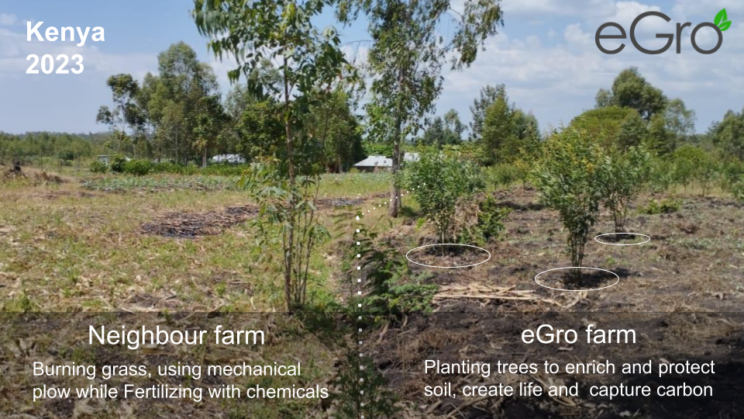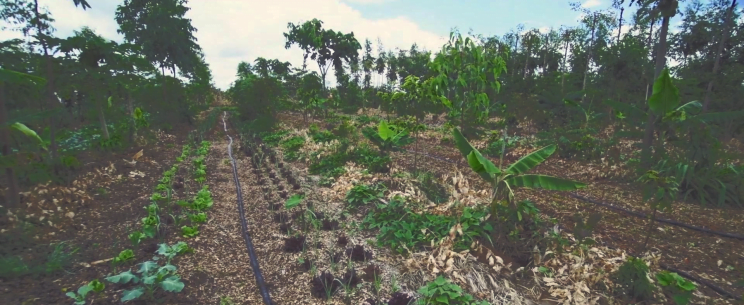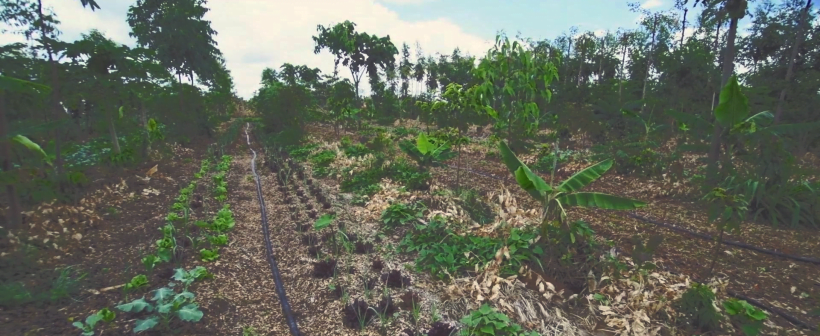The eGro model is flexible and adaptable to all countries. Before we develop the model for a specific country, we evaluate on a number of things. All crucial factors are weighed in, they are co-dependent, so all of them have to be met for us to invest in a country.

You can get a deeper understanding of our Opportunity Assessment of an individual country, culture or area of the planet in the following details.
Inputs
Climatic Assessment
Cultural Ability
Technical Design
Financial Opportunity
Geopolitical Assessment

Outputs
Climate Resilience
Social Impacts
Stability in Raw Materials
Inputs
Climatic Assesment
We evaluate the global weather patterns, looking for predictable rains at least once a year.
We evaluate the global weather patterns, looking for rain. If it rains with some consistency, our methods will work. Conventional agriculture would need irrigation systems that within a 30-year period would run out of groundwater. Agriculture in its current form simply fails to become sustainable for prolonged periods of time.
Cultural Abilities
Some cultures are very good at collaborating, they make collective decisions, and prosper.
Countries are shaped differently by their historical development. Some are collectivist with strong a sense of community feeling and co-creation. Such cultures are very good at collaborating, they make collective decisions and prosper. Knowledge sharing and agricultural production is helped by these cultural characteristics.
Technical Assesment
We design AgroEcological ecosystems for each specific local habitat with local species.
We design agricultural ecosystems for each specific opportunity. We draw most of our inspiration from permanent agriculture principles. These principles teach us about landscape architecture and design in natural patterns. They also include indigenous plants, that support multiple crops in demand on the global market. These systems become highly productive and self-sufficient with nutrients and water resources.
Financial Opportunity

We are looking for the most stable growth opportunities for our model.
We are looking for the fastest growth opportunities for our model. We need to operate in places where the return on investment from our commercial model is clear from day one and where continued growth is possible. It shouldn't be inhibited due to culture or governmental policies and their national strategies. We also design and implement our model to have the fastest and most profitable return on the investment.
Geopolitical Assesment
Long term regional stability and local logistics are necessary for a reliable supply chain.
Long term regional stability is necessary for a reliable supply chain. We are looking at the bigger picture. A crucial factor for a productive culture to thrive and build commercial partnerships is a secure, stable and functioning political situation. Conflict risks in the past were based on ruler's desire for wealth, land and access to natural resources. For the latest century and for some current conflicts, it has been based on ideologies. The future frictions between nation states and their people will be dictated by water and food scarcity and climatic changes.
Outputs
Social Impacts
Trading with foods and forest products creates local jobs and development for everyone in reach, both technological and economical.
Development of agriculture in emerging countries is crucial for local economy. Ensuring the possibility for farmers to sell on a global market drives them forward, commercially as well as socially. It not only creates jobs and wealth, it also empowers farmers. It allows rural people to dream of their daughters becoming doctors. It all starts with a production model that protects natural resources, soil, water and biodiversity. This creates a high and sustainable yield and income to continue for a centuries.
Environmental Impacts
Infertile and dry lands will become productive in the future. We can reverse the climatic changes through a business model.
The eGro model will be driven forward by global consumerism, and thus have a global impact. Our model has the potential to fully transform all infertile and dry lands into productive forests. Imagine Earth having a completely new look seen from the space, the deserts have become small and the food forests have taken over the planet. This gives us back our groundwater for future generations to drink, and it cleans our atmosphere from CO2.
Stability in raw materials
The eGro model is the basis for reliability in supply chain deliveries for the food industry.
With the climatic changes we are seeing everyday, food producers will soon reach a critical tipping point of instability. There is a current extreme water stress on 40% of the producing lands, the global demand is high and the supply chains are beginning to show incidents of breaking down. When food producers transition to the eGro model they will be able to meet demand without failure in their supply deliveries. A few ´clever companies´ within the food sector already understand this reality, they are looking to adapt to sustainable models at their end producers.







